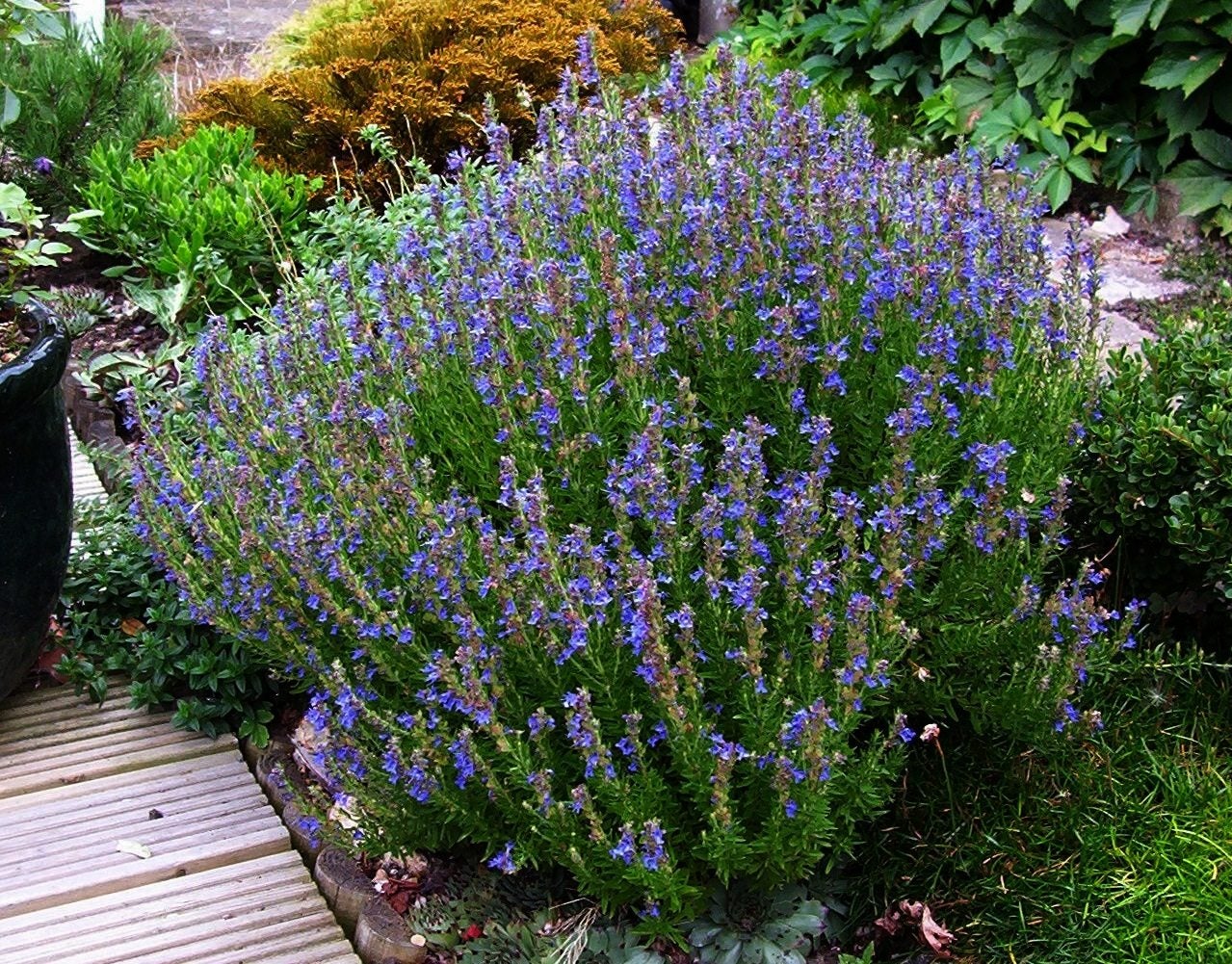Hyssop: A Versatile Herb with a Rich History
Hyssop (Hyssopus officinalis) is a perennial herb that has been cultivated for centuries for its medicinal, culinary, and ornamental properties. Native to the Mediterranean region, hyssop is known for its distinctive aroma and flavor, as well as its numerous health benefits.
History and Symbolism
Hyssop has a long history of use dating back to ancient Egypt, where it was considered a sacred plant. It was also mentioned in the Bible, where it was used for purification rituals. In Greek mythology, hyssop was associated with the god Apollo, who was said to have used it to heal the wounds of his son, Asclepius.

Physical Characteristics
Hyssop is a low-growing, bushy plant that typically reaches a height of 12-18 inches. It has slender, woody stems and small, oval-shaped leaves that are covered in fine hairs. The leaves are aromatic and have a slightly bitter taste. Hyssop produces clusters of small, tubular flowers that are typically blue, purple, or pink.
Culinary Uses
Hyssop is a versatile herb that can be used in a variety of culinary applications. Its distinctive flavor can add depth and complexity to a wide range of dishes. Here are some common culinary uses for hyssop:
Meat: Hyssop can be used to flavor meats such as lamb, pork, and poultry. It is particularly well-suited for grilling or roasting.

Medicinal Properties
Hyssop has been used for centuries for its medicinal properties. It is thought to have a number of health benefits, including:
Digestive health: Hyssop is believed to aid digestion and relieve symptoms of indigestion, such as bloating and gas.
Growing Hyssop
Hyssop is a relatively easy herb to grow. It prefers full sun and well-drained soil. Hyssop can be propagated from seeds or cuttings. Once established, hyssop is a low-maintenance plant that requires minimal care.

Conclusion
Hyssop is a versatile herb with a rich history. It has been used for centuries for its medicinal, culinary, and ornamental properties. Hyssop is a good addition to any herb garden, and its distinctive flavor can add depth and complexity to a wide range of dishes.
FAQs